So you are planning a visit to Japan...
Japan is at once ultra-modern and steeped in ancient and meticulous culture. Here are a few tips and hints to help you navigate your way through the maze of an extremely different culture, where manners and rules precede laws in importance and where hospitality and politeness are integral aspect of society.
Topics covered include:
Japanese Cuisine (and dietary restrictions)
Japanese Chopsticks
Footwear Culture
Japanese Hotspring (Onsen) Culture
Communication and Hand Gestures
Winter Attire including recommendations for Winter Boots and Ice-grippers.
Security.
Scroll down to find each section.
Japanese Cuisine
Only two cuisines are listed by UNESCO as intangible cultural assets, and the Japanese cuisine is one of them!
Despite common assumptions made outside Japan, Japanese cuisine is not all raw fish. Nor is sushi a synonm for Japanese cuisine. Raw fish (and other raw meats) is called sashimi, and along with sushi it makes up just a small part of an amazingly diverse food culture. I regularly record more than 100 species of foods (grains, pulses, herbs, spices, vegetables, fruits, shellfish, fish and meats) on each trip I make through Japan, a feat that would be hard to match anywhere else in the world.
The traditional Japanese diet is extremely healthy, as it is low in fat and low in dairy produce with an emphasis on foods from the sea rather than red meat. That said, outside the main cities being a vegetarian is very difficult and following veganism almost impossible (see below), though there is apparently one vegan restaurant in Tokyo.
If you wish to experiment with a phenomenally diverse array of foods then you are visiting the right country.
A basic meal consists of a bowl of rice, a bowl of miso (or other) soup, a dish of pickled vegetables, a piece of grilled fish, but may include a small dish of tempura, and sashimi. Typically all of these dishes will be placed in front of you, and in front of the dishes there will be a pair of chopsticks on a chopstick rest. At such a meal one doestn't eat all of one dish first, then move on to the next, instead one takes a taste of a dish, then a mouthful of rice, a taste of another dish, then a mouthful of rice. In this way the delicate flavour of the rice acts as a palate cleanser between tastes, rather than between courses. Rice, almost always white rice, is served plain – and that is the way it is meant to be. Although strange things happen at Japanese restaurants overseas, in Japan one never puts soy sauce on white rice. It simply isn't done! If you have picked up that habit somewhere on your travels, please drop it once you arrive in Japan.
At a fancy hotel, the meal may be served in courses, and under these circumstances the rice and soup will most likely be served right at the end of the meal. It is the hosts way of saying "if we haven't filled you up with all these gorgeous dishes, we hope this will satisfy you."
Dietary Restrictions and Visiting Japan
The Japanese cuisine is an extraordinarily diverse and delicious one. Restaurant chefs and cooks pride themselves on preparing attractive, tasty and nutritionally well-balanced meals. Please be aware that away from large city hotels, restaurants are not used to catering to individual requirements. They serve their food in much the same way that an artist creates an image; the customer's responsibility is to select from the menu. Restaurants do not expect to deal with dietary restrictions. After all, no-one commissioning a painting would ask the artist to hold the red and replace it with blue, or go heavy on the green.
The term for this style of dining is Omakase in which the chef chooses the freshest seasonal ingredients and designs a meal to incorportate visually attractive, nutritious and balanced dishes.
Westerners especially have a tendency to want to have restaurants tailor menu items to their own particular taste, as if the chef is working privately for them. In Japan it is more normal to carefully select your restaurant before you go out to eat based on the food that the chef prepares. Restaurants (away from the large cities) cannot be asked to hold the x and replace it with y. If you don't like the dish as it is listed in the menu, then select a different item (or a different restaurant), the alternative is to eat what you like and leave the rest.
In small accommodations, minshuku and pensions, meals are set. This means that you will be served what your hosts provide at that meal on that day – take it or leave it. These meals are usually very generous in the number of dishes, beautifully presented, tasty and nutritious. In such cases you have no choice, other than to eat what you like and leave what you don't like; however, there is usually more than enough of everything to ensure that you don't go hungry even if you don't like fish/seafood/meat/dairy products/tomatoes or whatever.
Vegetarian Diet: In some situations it is possible to ask hosts to prepare a vegetarian meal. However, please bear in mind that your hosts, while doing their best, may not understand quite what you mean by vegetarian. (We don't always understand either, as we have encountered vegetarians who also eat red meat, and others who eat fish, but not meat, and so on.) While a dish may be vegetarian, the stock that is used as the base may not. The salad may consist of vegetables, but more than likely bonito flakes or some other non-vegetable may be added as a garnish at the last moment. Accommodations will do their best to serve their interpretation of a vegetarian meal. Again you have the same choice – eat what you like and leave the rest.
Vegan Diet: Veganism is extremely difficult to cater for in Japan. We have heard of one vegan restaurant in Tokyo, though there may be others. That does mean that if you choose to travel away from Tokyo you are very unlikely to find anyone able to provide a vegan meal or even understand what it means. The best you can ask for is a vegetarian meal and eat what you can.
MSG: While common in Chinese dishes, this is rare in Japanese cuisine as chefs choose fresh produce and prepare it simply. If you dislike or are allergic to MSG then avoid the fast food restaurants (and processed foods) where it is most likely to be encountered.
A key element of Japanese cuisine, both in preparation and in eating, is the use of chopsticks. So more on how to (and how not to) use them below.
Etiquette in Japan is very very important, so learning the basics will go a long way towards endearing you to your hosts.The two most important areas of etiquette concern chopsticks and footwear.
Japanese Chopsticks (Hashi)
.jpg) Japanese chopsticks taper strongly to a relatively fine point (they differ markedly from Chinese and Korean chopsticks).
Japanese chopsticks taper strongly to a relatively fine point (they differ markedly from Chinese and Korean chopsticks).
Japanese chopsticks are held lightly, as if painting water colours with a small brush, or drawing lightly with a crayon or pencil. The upper chopstick is held loosely with two fingers and the thumb; this is the one that moves. The lower chopstick rests on the fourth finger and at the base of the thumb; this one doesn't move.
.jpg) By moving the tip of the upper chopstick against the lower chopstick it is possible to pick up even the smallest of food items (such as rice grains or pepper corns) one at a time.
By moving the tip of the upper chopstick against the lower chopstick it is possible to pick up even the smallest of food items (such as rice grains or pepper corns) one at a time.
First time users tend to hold chopsticks tightly and so find them tiring to use, but afer a while and some practice you will probably realise how heavy and unwieldy metal knives and forks are.
.jpg) Just as when eating with knives and forks it is considered impolite to: wave chopsticks around, point at anyone or anything using them, or use them instead of a toothpick! In between mouthfuls it is polite to put your chopsticks down (don't plant them in your food, as this shockingly resembles part of the Japanese cremation ceremony), and rather than resting them across your plate or bowl, use the special rest, called a hashi-oki.
Just as when eating with knives and forks it is considered impolite to: wave chopsticks around, point at anyone or anything using them, or use them instead of a toothpick! In between mouthfuls it is polite to put your chopsticks down (don't plant them in your food, as this shockingly resembles part of the Japanese cremation ceremony), and rather than resting them across your plate or bowl, use the special rest, called a hashi-oki.
Hashi-oki may be porcelain, metal or wooden and come in many different attractive designs.
Some restaurants provide disposable chopsticks rather than re-useable ones, prompting many of us to carry our own personal pair to save waste. Disposable chopsticks are made from one piece of wood/bamboo, so must be pulled apart. An etiquette point here is that it is impolite to rub or roll your chopsticks together in your hands (though this might be a natural reaction) – but it rather suggests that you feel the chopsticks are of poor quality.
If you prefer to watch videos on how to hold them and use them, then here are two to help you along.
If all that sounds too tricky and you would like to use chopsticks a very easy way, then there is a cheap and easy to use device, called Funchop, that takes away the worry for first time or less familiar chopstick users. It turns them into a giant pair of lightly spring-loaded tweezers! Funchop are well worth trying by anyone visiting Japan, who might be concerned about using chopsticks on a daily basis.
If you'd like to carry your own pocket chopsticks to save the waste of restaurant disposables, then we can recommend Kikkerland Travel Chopsticks as very convenient and lightweight. They come in their own handy tube, which is shorter than a ballpen and doubles as a chopstick rest.
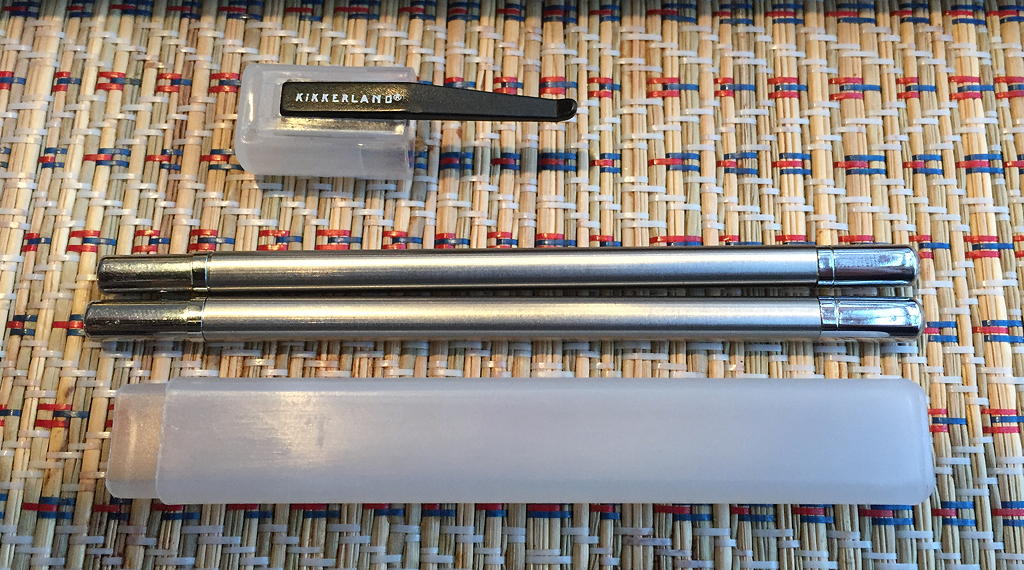
The chopsticks slide out of the case easily and fit together simply, in a snap.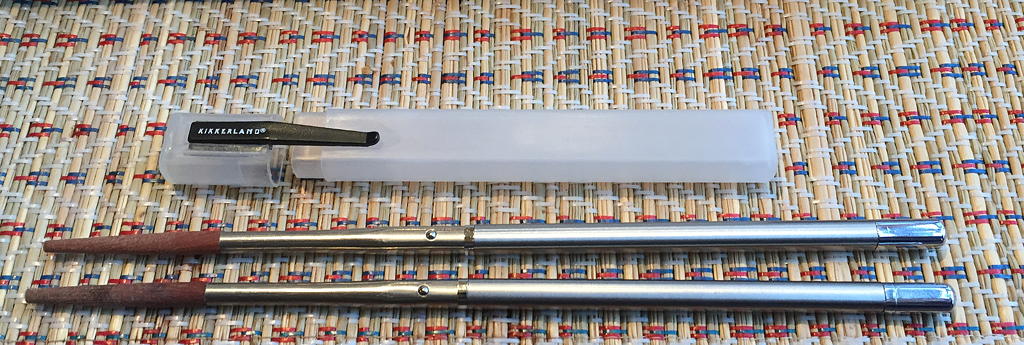 From funereal behaviour to boorish behaviour, this website on general Chopstick Etiquette points out all of the important do’s and don’ts for folk visiting Japan and I highly recommend it for all of us.
From funereal behaviour to boorish behaviour, this website on general Chopstick Etiquette points out all of the important do’s and don’ts for folk visiting Japan and I highly recommend it for all of us.
Before eating one must of course enter a home, a restaurant or hotel, and knowing what to do with one's footwear is crucial. Read more to learn about Japan's amazing footwear culture.
Japan is a country of ritual, and of correct and incorrect ways of doing things.
Footwear Culture
Perhaps nowhere else in the world will you have the opportunity, or be required, to change footwear so many times a day as in Japan: from outdoor boots to slippers to toilet slippers and back again! That is one reason why I very strongly recommend pull-on, or zip-up, winter boots for those travelling in winter (see below), and easy slip-on shoes for the rest of the year, as you and your fellow travellers will find the time you take lacing and unlacing tedious.
.jpg)
Winter boots (with ice-grippers) in a genkan © Mark Brazil
One trick is to tie one's laces sufficiently tightly to hold on your shoes comfortably for walking, but sufficiently loosely so that you can step out of them easily and get back in using a shoe-horn. Yes, shoe-horn! You will find shoe-horns throughout Japan. They are simple and easy to use. Although I have seen some visitors completely floored by the concept of standing and using a shoe-horn, it is remarkably easy. If you are unfamiliar, ten second of practice is all you require.
Japan's slipper culture may seem at first baffling, but my article:
Japan House & Home: Slipper Culture
on the JapanVisitor.com webiste was written specially to help explain it all.
Do watch these videos too, as they show you many important aspects of the significance of shoes, the genkan and slipper culture.
Japan - How To: Shoes and Genkan
and for a humorous look at various aspects of the country's culture you might enjoy Aaron & Kevin's video on
If you would like to understand more about the historical and cultural background to Japan's slipper culture, then you may enjoy reading the following from friend and colleague Professor Ron Wixman.
Japanese Culture 101: Shoes/Footwear and Entering Homes, Hotels, Temples and Shrines
Japan is a fascinating and wonderful country to visit. In addition, the Japanese are polite, friendly, and very tolerant of foreigners. On the other hand, it enhances one's experience in Japan by learning a number of customs that are extremely important to the Japanese. While they will look the other way, or pretend that some trespass does not bother them, and they might even say that something is OK to do, some customs are best learned and followed by the guest/visitor/tourist, rather than ignoring them. Among these, perhaps the single most important of these is understanding and following the extremely important issue of removing one's outdoor footwear when entering a house, temple, home, shrine, or bathroom, and doing so in the correct way.
As the Japanese percieve the world, according to their Shinto beliefs, the ground we walk on is not clean in a SPIRITUAL SENSE. This is not to be confused with dirt in the sense of cleanliness. One does not remove shoes just because they have dirt, dust, mud, etc. on them. The important issue is to NOT TO GO FROM THE SPIRITUALLY PROFANE GROUND TO THE SPIRITUALLY PURE HOME/TEMPLE SPACE. While we often mistake taking one's shoes off when entering a home, which is common around the world (especially where one finds beautiful carpets, as in the Middle East), as an issue of cleanliness, the Japanese have a very different world view. One removes shoes in a mosque as the men pray by putting their heads on the floor and therefore one should not walk on the floor or rug with dirt brought in from the outside – this is not a religous/cultural issue, but one of mere hygiene. We, in our world, take off our shoes and then enter in our stocking covered feet. This is common in many parts of the world. There, we may take off our shoes, walk around on the floor or ground, and then enter wearing our (now dirty) socks.
THIS MUST NOT BE DONE IN JAPAN. ONE DOES NOT EVER WALK ON THE FLOOR OR GROUND WITH SOCKS ON AND THEN STEP UP ONTO THE WOODEN PLATFORM, OR RAISED AREA, IN SOCKS IF ONE HAS STEPPED ON THE PROFANE GROUND (EVEN IF IT IS A REGULAR FLOOR). This should be compared to a concept of purity in Hindu culture, where somethings are ritually or spiritually clean, and tainted or defiled if not done properly. For example, if a person of a lower caste eats out of a bowl, regardless of who cooked the food, it cannot be used by a person of a higher caste. If a low caste person touches the food, it can no longer be eaten by the person of a higher caste. We can also compare this to the concept of Kosher (or Koshruth) in Jewish culture. It has little to do with hygiene or cleanliness, but rather has to do with ritual purity. The issues of shoes/socks etc. entering a house is one of ritual purity and sanctity and is extremely important to Japanese people.
.jpg)
Winter boots (with ice-grippers) in a genkan © Mark Brazil
THEREFORE – What one does when removing the outdoor footwear (whether shoes, boots, slippers, flip flops, or what ever) is to STEP UP AS CLOSE AS POSSIBLE TO THE RAISED PLATFORM, AND STEP OUT OF THE FOOTWEAR DIRECTLY ONTO TO THE PLATFORM, WITHOUT STEPPING ONTO THE FLOOR OR GROUND IN ONES SOCKS. The socks do not go on the ground or floor, but rather directly OUT OF THE SHOE AND ONTO THE PLATFORM. When observing the Japanese they will most often turn around, put their heels against the platform, then step out of their shoes directly onto the platform. They will either leave the footweat on the floor next to the platform, or will pick them up and put them on a shelf in a cubby hole provided nearby. This is the same procedure to be followed at an Onsen (traditional Japanese bath).
In most hotels slippers will be provided immediately upon stepping onto the platform. These slippers are worn while in the hotel or hot spring. If you use the toilet, there will be different slippers in the toilet. One follows the same rule as entering a house. One steps out of the slippers and puts on the toilet ones, directly, and without stepping on the floor. Upon leaving the toilet one does the same (step out of the toilet slippers, directly into the room slippers).
If you step up onto something (a platform or raised area) one follows the same rules.
It is not natural for us at all, but it is REALLY IMPORTANT TO OUR JAPANESE HOSTS. Remember that frequently we will not be staying in western hotels, but in small Japanese traditional accommodions. If we make a mistake, they will not make a big deal openly, but we do not want them to think we are hairy barbarians.
Few cultural customs are as important as this. It is also a fun and enriching experience to learn a "foreign" way and take part in their traditional life, rather than just being a tourist. We have also arranged all of our stays in more traditional lodgings and at traditional Onsen hotels (hotels built at or on a natural hot spring).
Japanese Hot Spring Culture (Onsen)
Japanese Hot Springs or onsen, are a wonderful and traditional part of Japanese culture. They are not merely excellent places to get clean or warm up after a cold day, onsen are legitimate relaxation therapy in a nation that until recently had a lifestyle that revolved almost entirely around work. More than just a place to clean and soak, an onsen is fed from a registered mineral hot spring. The mineral content, colour and texture of the water differ at each spring and local people consider that they have therapeutic properties. Whether they do or not, I can assure you that they are wonderfully warming and relaxing, especially after a long day out watching wildlife.
Modern hot springs have gender segregated changing areas and pools, so there is no need to worry about your modesty or embarassment (unless you enter the wrong door).
At each onsen there is a place to change out of your day clothes; there are typically shelves, baskets or lockers in which you place your things. Then, naked (bathing suits / swimming costumes are not allowed) and armed only with a long, narrow Japanese bath towel, one proceeds to the washing area. There, seated on low stools in front of taps / faucets and using the soap and shampoo provided, one washes from head to toe. Only after all soap suds have been rinsed off (taking care not to splash or 'sprash' your neighbours with water) do you proceed to the bathing pool itself. The pool is for soaking in, not for cleaning.
Many onsen offer a range of pools at different temperatures. Find a cooler one to begin with and enter cautiously – it may be warmer than you think. Sit quietly on the edge, perhaps only up to your ankles or knees at first until you adjust to the heat, then sink deeper into the water. This is no endurance test and as taking prolonged hot baths can be very dehydrating only stay for a short time at first. Move between pools to try them out. And don't forget to try out the outdoor pool, called rotenburo. The rotenburo is the very best part, as there one can sit under the stars, or in falling snow, experiencing the delicious contrast between the ambient temperature and the piping hot water. This is the place to begin your bath list (birds and mammals seen from the hotspring).
Communication & Hand Gestures
Japan is distinct in very many ways, including in its non-verbal communication, particulaly hand gestures. Such gestures vary enormously in their meaning between cultures and are fastinating to observe. Look out for them during your time in Japan, and in preparation check out the following video:
Visiting Japan in winter (January & February) – ice and snow season.
Winter Attire: Boots
Finding light-weight winter boots with great warmth and good grip is a challenge. Even more of a challenge is to find good light-weight boots that pull on and off easily. Lace-up boots are a real nuisance in Japan where taking ones shoes off multiple times a day is the norm.
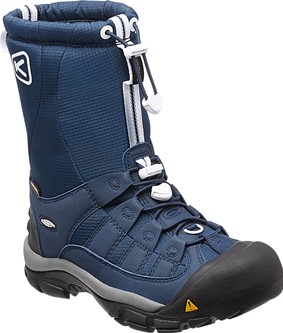 My boots of choice for the harsh winter months (January, February and in some years early March) are lightweight, thinsulate-lined and very warm even when standing on ice and snow for long periods. I have tried various models and makes and have returned again and again to Keen and currently use Keen Winterport II (previously Brixen). Other manufacturers, such as Columbia or North Face, now make similar styles of boots, some even with a side zipper making them even easier to remove and pull on.
My boots of choice for the harsh winter months (January, February and in some years early March) are lightweight, thinsulate-lined and very warm even when standing on ice and snow for long periods. I have tried various models and makes and have returned again and again to Keen and currently use Keen Winterport II (previously Brixen). Other manufacturers, such as Columbia or North Face, now make similar styles of boots, some even with a side zipper making them even easier to remove and pull on.
When shopping around make sure you find something without laces (a real pain in Japan) and with a low temperature rating and good thinsulate insulation.
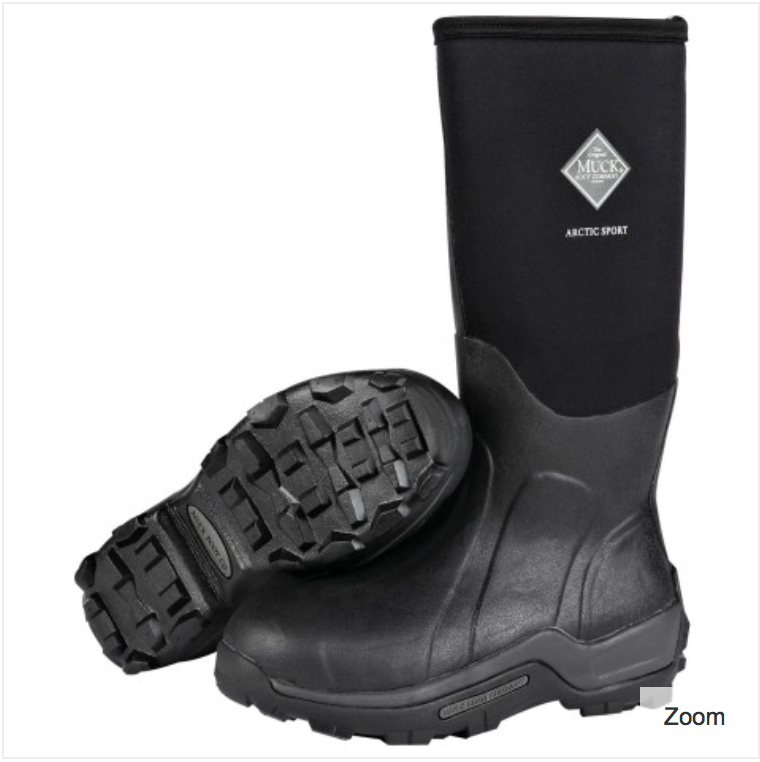 Others choose to use their Muckboot Arctic Sport boots. These are ideal for zodiac landings in the Arctic and Antarctica, and they are not bad for winter Japan as they are well-insulated and pull on. They are rather bulky though and wearing them on flights isn't so convenient.
Others choose to use their Muckboot Arctic Sport boots. These are ideal for zodiac landings in the Arctic and Antarctica, and they are not bad for winter Japan as they are well-insulated and pull on. They are rather bulky though and wearing them on flights isn't so convenient.
Some opt for the old-style Sorel boots (clunky, rather heavy lace-ups) with their removable felt liners, though I cannot recommend them. Nor can I recommend Neos over boots. These may work for you for some landing situations, but unfortunately, I have seen too many folk trip and even fall in them. As an overboot they provide poor stability and traction on ice and snow and the addition of a further layer – the ice-grippers – doesn't work well with them.
Winter Attire: Ice-grippers
Winter in Japan is such a wonderful season. Remember though that ice and snow are the norm in the north (especially Hokkaido) and that a hard fall onto ice can seriously affect the enjoyment of your trip, not to mention impacting those with whom you are travelling. For all trips led by Mark Brazil in winter, ice-grippers (not crampons) are not only essential, but compulsory. You will need them when visiting the Japanese Macaque site at Jigokudani and in east Hokkaido.
There are many brands on the market, but after many years of experience with many brands, there are only two types that I recommend.
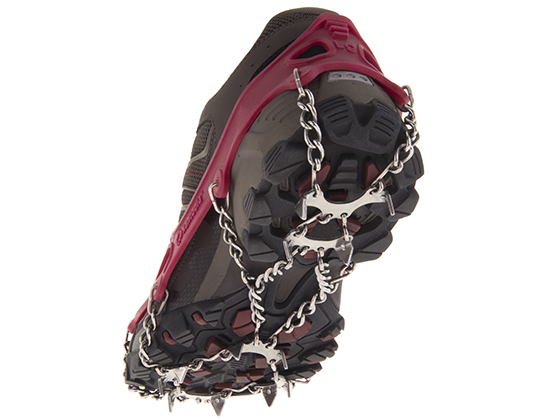 My ice-grippers of choice are Kahtoola Microspikes. These pull on and off easily, have loose chains and amazingly strong and rigid spikes. Mine have dulled, but only after several years of heavy use. They give excellent grip on sheer ice and also work well in packed snow. They work well for winter walking and winter jogging.
My ice-grippers of choice are Kahtoola Microspikes. These pull on and off easily, have loose chains and amazingly strong and rigid spikes. Mine have dulled, but only after several years of heavy use. They give excellent grip on sheer ice and also work well in packed snow. They work well for winter walking and winter jogging.
One client wrote: "The Kahtoola MICROspikes were a necessity.... we wore them almost every day. THEY ARE AN ABSOLUTE MUST! And that is from us in Wisconsin who are used to ice and snow." Jane from Wisconsin.
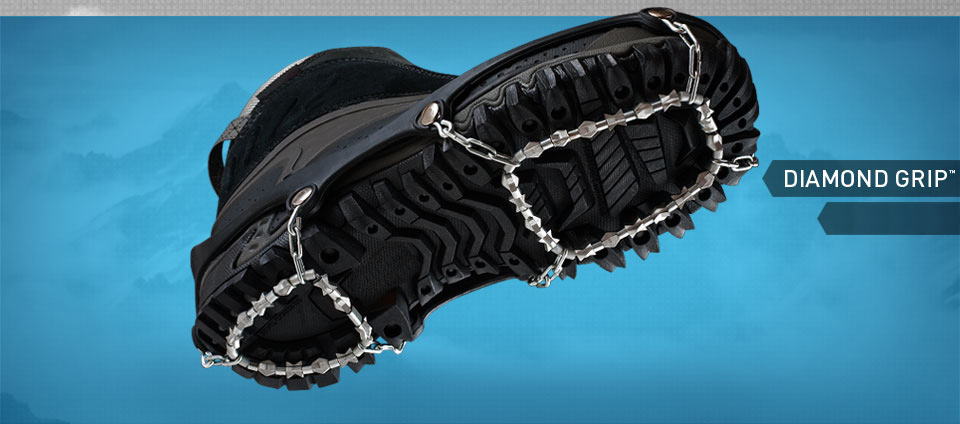 My second choice ice-grippers are: ICEtrekkers diamond grip. These also pull on easily, but instead of spikes they have ridged rollers over wires that bite into ice very well indeed.
My second choice ice-grippers are: ICEtrekkers diamond grip. These also pull on easily, but instead of spikes they have ridged rollers over wires that bite into ice very well indeed.
The only reason that I place them second, rather than equal first, is that without points they don't grip into snow quite as well as the Kahtoola Microspikes.
I have field tested many makes and models produced by companies such as Yaktrax and Stabilicers, but either they are difficult to pull on, or do not work effectively on hard ice and packed snow, or they won't stay on while hiking. The two brands I recommend are easy to pull on (make sure you buy a size large enough to pull on to your winter boots), give superb traction, and, very importantly, do not fall off while walking.
.jpg) No, I don't have any financial incentive from any of the companies that I have recommended; however, I do have a major vested interest in you having and using them whenever we encounter ice or packed snow. If you fall and injure yourself then our day in the field watching cranes, monkeys or eagles will suddenly be spent in travelling to a hospital to enjoy polite but lengthy waits for x-rays and doctors, or worse!
No, I don't have any financial incentive from any of the companies that I have recommended; however, I do have a major vested interest in you having and using them whenever we encounter ice or packed snow. If you fall and injure yourself then our day in the field watching cranes, monkeys or eagles will suddenly be spent in travelling to a hospital to enjoy polite but lengthy waits for x-rays and doctors, or worse!
A client who refused to buy ice-grippers for one of my trips in early 2015 fell on his very first outing on icy snow; thankfully, he was not seriously injured, but he became an instant convert and quickly borrowed my backup pair.
A fellow widely experienced tour leader in early 2015, who was disinclined to heed my requirement that even he should have them and also being convinced that after decades of working in Antarctica he didn't need such things, was also an immediate convert after his first icy winter walk in microspikes.
The moral of the story is that if you are joining me for one of my tours in Japan this winter and you haven't bought your ice-grippers yet, do so today!
Security in Japan
On arrival into Japan you will pass through immigration at which point you will be finger-printed and photographed. As a visitor to Japan you are required by law to carry your passport with you at all times for identification purposes. Japanese residents are required to carry identifcation.
Japan remains one of the safest countries in the world. Crime rates are exceedingly low in comparison with most other first world countries, and there are numerous seemingly extraordinary stories of lost items (including wallets etc) being returned to their owners involving considerable effort on behalf of the finder. That said, there are criminals in Japan and local citizens and safe travelers take the usual necessary precautions – such as keeping bags closed and valuables in inside pockets. Unfortunately, petty crime, such as pick-pocketing, amongst foreign tourists is on the rise. Precaution is always advisable.
Many hotel rooms provide safes and it is wise to use them, or lock items inside your luggage, though as yet we have not heard of travellers being robbed on tour. Japan remains largely a cash-based society, though transport cards and credit cards are increasingly common, thus most people carry larger amounts of cash on them than they would elsewhere in the world.
Weapons
Weapons are illegal in Japan. Weapons, including Pocket Knives should NOT be carried in Japan. The US embassy in Tokyo sensibly posts the following warning: "Possession of a knife with a locking blade, or a folding blade that is longer than 5.5 cm (a little more than two inches) is illegal in Japan. Leave your Swiss Army Knife at home."
It would be tempting to interpret the blade limit to mean that one can carry a knife with a blade of less than 5.5 cm; however, the crucial fact is that if stopped by the police one must provide justification to them as to why you think carrying a knife is necessary. Although typically very polite and helpful, the police will decide whether they accept your justifcation or not! The risk is not worth it. Visitors have been arrested and detained for more than 10 days for carrying illegal pocket knives.
Why do I mention this? Because one of my clients narrowly avoided arrest at Haneda Airport because she was found to be carrying a small pocket knife in her carry-on bag! At an airport it is not just a matter of airport staff confiscating knives, but also of them reporting an illegal act to the police.
Drugs
While traveling in Japan you are subject to Japanese laws regardless of your citizenship. For example you may be detained if you are not carrying your passport or residency card with you. The blood-level limit for alcohol is zero, thus driving under the influence of alcohol can lead to immediate jail time. Even minor offenses can lead to being held in detention without bail, sometimes for several months. The very best way of avoiding all encounters with the police and the legal system is by following the rules.
The Japanese authorities aggressively pursue drug-related crimes and penalties are severe. Drugs acceptable in some countries or US states are illegal in Japan. Conviction rates are high and offenders are given long gaol sentences and hefty fines. Solitary confinement is common and first hearings can take up to a year. Use of all drugs, including marijuana, is strictly illegal.
When traveling to Japan, especially from south or southeast Asia, in addition to not carrying packages that do not belong to you, check your bag before you remove it from the baggage carousel. If you see any signs of tampering or lock removal do not touch your bag, alert the authorities immediately and explain that you fear something may have been put into your bag. If you remove your bag from the carousel then what ever is inside is yours! Actually, that's a worthwhile precaution anywhere in the world.
If you have read this far do let me know if you have any questions and I will follow up by adding more tips and hints.
© 2020 Mark Brazil
Last updated: 20200202

